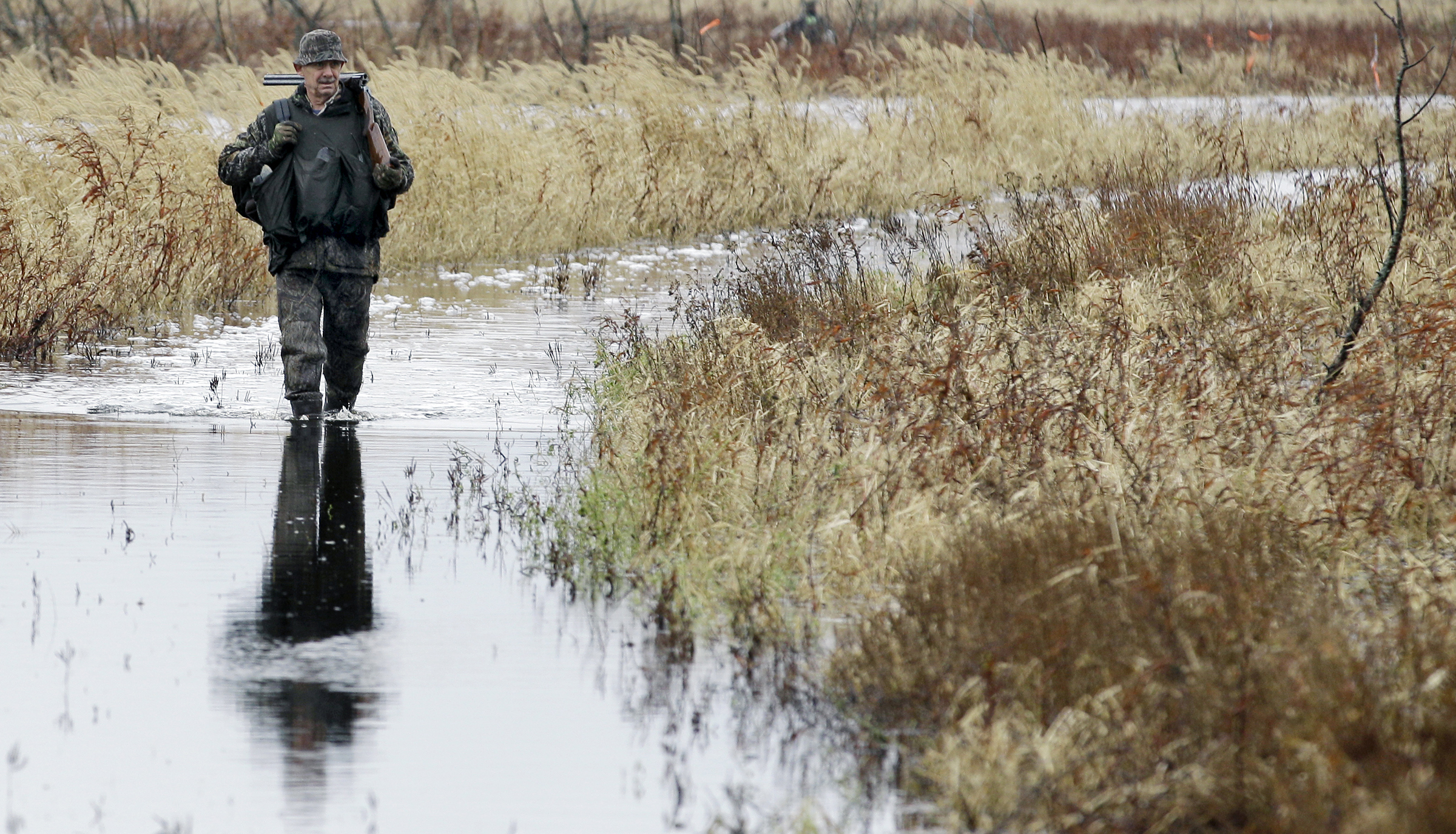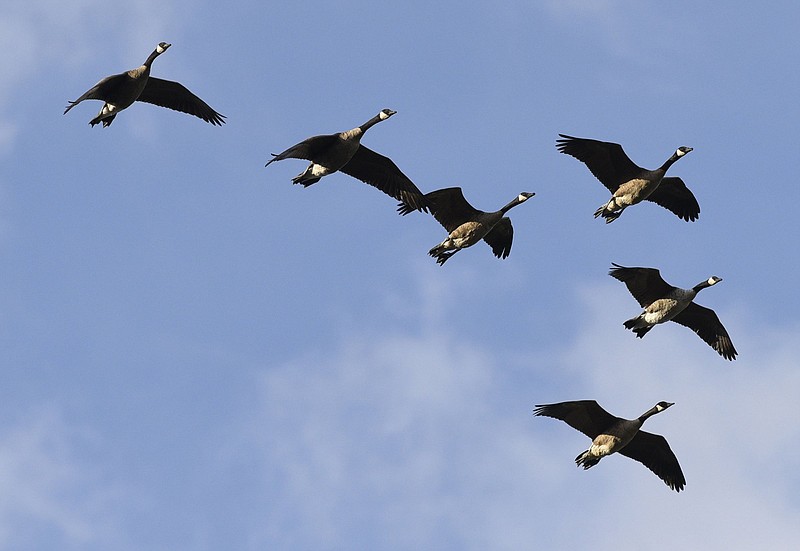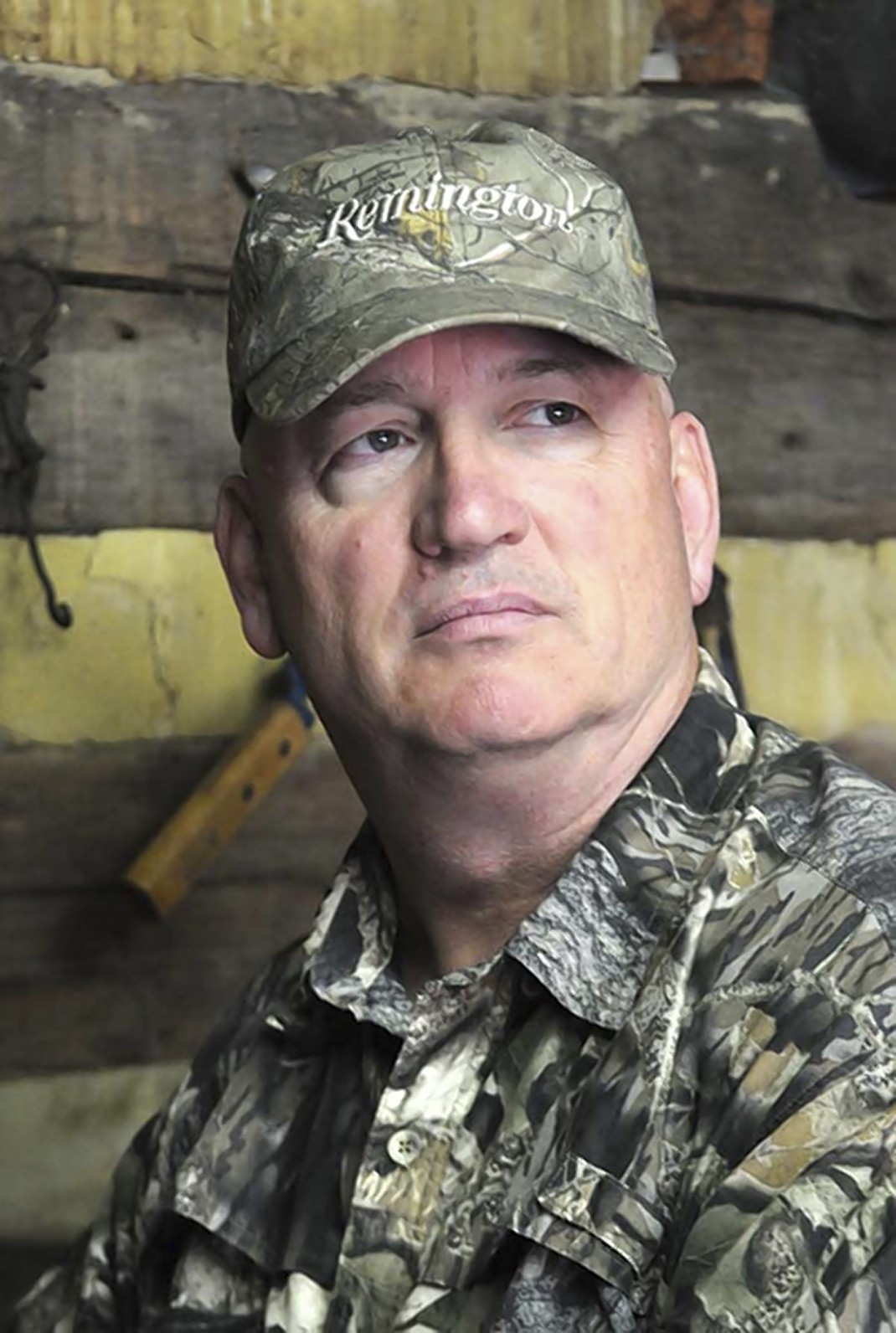"Fetch 'em up!" my buddy yelled, but his little yellow Labrador already had streaked across the field, grabbed a Canada goose and was trotting back to us.
If ever there was a look of contentment on a dog's face, he had it. Dropping off the bird, the happy pooch turned and ran back to the field; he had two more geese to deliver.
It was misty and cool along the Greenbrier River that morning, but we knew that soon the sun would burn off the fog and the temperature might very well go into the 90s eventually. On this day, we had to make hay before the sun could shine.
Early-season hunting is like that, and for my purposes I'm going to say this year's early season started with dove and early goose season - Sept. 2 in West Virginia - and runs till about mid-October.
Let's look at what the early season has to offer you.
Early birds provide opportunities. The mourning dove season has traditionally been the kickoff to the fall hunting season, and in most states it starts around Sept. 1. Dove hunting can sometimes be a large, gregarious affair with several hunters around a cut corn or bean field. It is usually hotter than a $2 pistol where the temperature is concerned, and the shooting can be just as hot. Dove shoots are often known for high numbers of spent shells and low bird counts. Sometimes there is a lot of barbecue to eat and the gathering and fellowship is more important than the shooting.
It is important to provide your own shade and lots of water, especially if you bring a dog. Bird dogs love to be included in a dove hunt for retrieving duty, but a typical hunt that time of year is usually very warm. Make sure you have lots of water for your pooch and a way to get him in the shade; dogs can overheat very quickly, and especially when retrieving.
 AP photo by David Duprey / Jim Kaszubowski walks out of a marsh after a morning of duck hunting in November 2012 at the Iroquois National Wildlife Refuge in Alabama, N.Y. For many waterfowl hunters in the United States, mid-October provides a chance to hunt both ducks and geese, writes outdoors columnist Larry Case.
AP photo by David Duprey / Jim Kaszubowski walks out of a marsh after a morning of duck hunting in November 2012 at the Iroquois National Wildlife Refuge in Alabama, N.Y. For many waterfowl hunters in the United States, mid-October provides a chance to hunt both ducks and geese, writes outdoors columnist Larry Case.Many states now have an early season for resident Canada geese. These geese are now a problem in many areas because they love to feed and take up residence around golf courses, lakes, farm ponds and recreational areas. Geese found in your area in early September are usually residents - they don't migrate and often will not leave the area even in bad winter weather. Resident geese can become real pests in some areas. Golf course workers really don't like them, and they can make swimming and other recreational areas very unsanitary.
This is all good for the goose hunter, but what you will find is that where the geese are located and making themselves a nuisance is not a place where you can actually hunt and discharge firearms. This calls for a little scouting and legwork. The resident geese may be loafing during the day at a lake or other area where hunting is not possible, but usually they go to a feeding ground early in the morning and late afternoon. This may be the place where setting up and lying in wait for these birds is possible. Remember that Canada geese are big birds, and waiting until a flock is close enough is essential.
The most common mistake in waterfowl hunting is shooting at birds that are out of range. Decoys and camouflage really help.
Squirrels will keep you busy. Many states start squirrel hunting in early or mid-September, and some even begin in August. Early season means a lot of foliage, and even though I have written a lot about squirrel hunting with dogs, in truth the still hunter - one who just quietly sits in a feeding area or stalks through the woods - will usually get more squirrels at this time of year.
Now, after the leaves drop, I want to be following a good squirrel dog. Until then it is fun to sneak around and see if you can get in range of a bushytail.
October offers more options. By now many states have another round of the split season for geese as well as the start of the early duck season. Now the waterfowl hunter can take advantage of ducks and geese, and you should be getting some migrant birds in your area, too, especially wood ducks and maybe teal.
The weather is still usually very warm by midday and, again, you will need to make provisions for your crew and canines with plenty of water and shade. The squirrel hunting should be a little better as the leaves are coming off now and maybe it is beginning to feel a little more like fall.
Around the middle of October, some states (including my own West Virginia) will start the fall turkey season, something near and dear to my heart. Since I'm about out of space, I better save it for another time!
Be safe out there, folks. The early season with all the foliage is often when most hunting-related incidents happen. Make sure of your target every time you touch a trigger and wear that blaze orange!
"The Trail Less Traveled" is written by Larry Case, who lives in Fayette County, W.Va. You can write to him at larryocase3@gmail.com.

